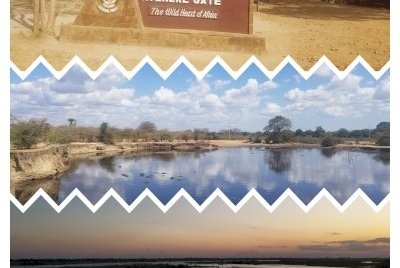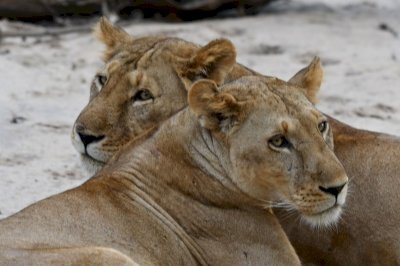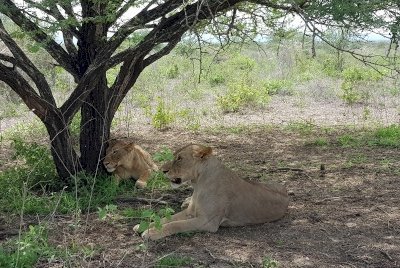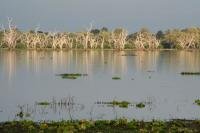Tanzania
Selous Game Reserve
The Selous Game Reserve is a largely undisturbed wilderness that holds one of the largest fauna reserves in the world.
Its main type of vegetation is Miombo woodlands. The landscape is furthermore characterized by ‘sand rivers’ – usually dry river beds that come to life after heavy rains. Selous has a high diversity and density of fauna species, including (at the time of inscription) over 100,000 elephants, over 2,000 black rhinos and 18,200 hippos.
Community Perspective: Be aware that the northern (and most visited) part of the park nowadays is called Nyerere National Park. Animal numbers are dwindling because of poaching, and off-road driving is still practised here. A standard trip will include a boat safari on the Rufiji River, a short guided walking safari, and a standard car safari. Zoë has a tip for Getting In: “As much as you love self driving for flexibility or prestige etc just fly in and go on a tour”.
Site Info
Official Information
- Full Name
- Selous Game Reserve (ID: 199)
- Country
- Tanzania
- Status
-
Inscribed 1982
Site history
History of Selous Game Reserve
- 2021: Advisory Body overruled
- IUCN advised to delist the site due to construction of Stieglers Gorge dam. Overruled by WHC, to be further discussed at 46th session.
- 2014: In Danger
- Due to poaching
- 2012: Boundary change
- 1982: Inscribed
- Inscribed
- In Danger
- Due to poaching Since 2014
- Type
- Natural
- Criteria
- ix
- x
Links
- UNESCO
- whc.unesco.org
- Official
-
- tanzaniatourism.go.tz — Tanzania Tourism: Selous Game Reserve
- Related
-
- africanworldheritagesites.org — African World Heritage Sites
All Links
UNESCO.org
- whc.unesco.org — whc.unesco.org/
Official Website
- tanzaniatourism.go.tz — Tanzania Tourism: Selous Game Reserve
Related Resources
- africanworldheritagesites.org — African World Heritage Sites
News Article
- July 28, 2019 wtop.com — Tanzania inaugurates huge dam project in World Heritage Site
- Dec. 14, 2018 finance-commerce.com — Tanzania agrees to construct $3B dam in wildlife park
- May 17, 2018 iol.co.za — Tanzania opens pristine Selous Game reserve to logging
- June 1, 2016 wwf.panda.org — Elephants could disappear from Selous within six years
- Oct. 4, 2014 zeenews.india.com — Tanzania records zero poaching in Selous
- Jan. 4, 2014 coastweek.com — Elephant population drops sharply at Selous
Community Information
- Community Category
- Wildlife habitat: Fauna
Travel Information
Recent Connections
-
Perfect Inscriptions
1982 -
African Wild Dog
"Species of particular interest include… -
Plant WHS not in a CPD
"The reserve has a higher density and d…
Connections of Selous Game Reserve
- Ecology
-
-
Lions
"It is estimated that there are close to 1,700 to 6,900 Lions in Nyerere National Park and surrounding Selous Game Reserve." -
Over 300 bird species
350 (AB ev) -
Hippos
"It also includes one of the world's largest known populations of hippopotamus (Hippopotamus amphibius) (18,200)" (OUV) -
Crocodiles
-
High-Biodiversity Wilderness Area
Miombo-Mopane Woodlands and Savannas -
African Wild Dog
"Species of particular interest include......... wild dogs (all IUCN Endangered Species" (AB eval) -
Big Five
-
Bovines
African Buffalo -
Critically endangered fauna species
(Eastern) Black Rhino -
Swamps and Marshes
"The property contains a great diversity of vegetation types, including rocky acacia-clad hills, gallery and ground water forests, swamps and lowland rain forest." (OUV) -
Elephants
African elephant -
Rhino habitat
Black Rhinoceros -
Ratites
common ostrich -
Strepsirrhini
brown greater galago
-
- Damaged
-
-
'Threatened' by Dams
proposed dam on the Rufiji River at Stiegler's Gorge within the Site -
Poaching
Commercial poaching for ivory and rhino horn has been strongly affecting target species in several wavesSee whc.unesco.org
-
Threatened by Oil and Gas Exploration
Potential Threat: "To this day, there appears to be a lack of clarity in terms of mineral exploration and exploitation in the property and a major overlap between the game reserve and exploration and extraction licenses becomes obvious from publicly accessible cadasters." (IUCN Outlook 2020)
-
- World Heritage Process
-
-
Perfect Inscriptions
1982 -
Minor modifications after inscription
2012: 1% of the park was removed from the designated area, to allow uranium miningSee www.bbc.com
-
- Human Activity
-
-
Uranium Mining
UNESCO has agreed that the size of the inscribed area may be reduced to exclude an area earmarked for Uranium mining
-
- WHS on Other Lists
-
-
IUCN Conservation Outlook Assessment Critical
-
World Heritage Forest Programme
-
Ramsar Wetlands
Kilombero Valley Floodplain -
Plant WHS not in a CPD
"The reserve has a higher density and diversity of species than any other Miombo woodland area: more than 2,100 plants have been recorded and more are thought to exist in the remote forests in the south." (OUV)
-
- Visiting conditions
-
-
Foreigner prices
50 USD for foreigners, 5,000 shilling for Tanzanians (2.5 USD)See www.tawa.go.tz
-
- WHS Names
-
-
Named after individual people
Frederick Courteney Selous DSO (31 December 1851 - 4 January 1917) was a British explorer, hunter, and conservationist famous for his exploits in Southern Africa.
-
News
- wtop.com 07/28/2019
- Tanzania inaugurates huge dam proj…
- finance-commerce.com 12/14/2018
- Tanzania agrees to construct $3B d…
- iol.co.za 05/17/2018
- Tanzania opens pristine Selous Gam…
Recent Visitors
Visitors of Selous Game Reserve
- Alberto Rodriguez Gutierrez
- Ali Zingstra
- Atila Ege
- dave wood
- Felicité
- Geert Luiken
- Iain Jackson
- Kbecq
- KentishTownRocks
- laris.kowal
- Lars Bogstad
- Little Lauren Travels
- Marlies van Wolfswinkel
- Nihal Ege
- Paul Schofield
- Peltzi
- Randi Thomsen
- Roman Bruehwiler
- Squire Sullen
- Svein Elias
- Thomas Buechler
- Thomas van der Walt
- Waxwing
- Wojciech Fedoruk
- Zoë Sheng
Community Reviews
Show full reviews
One would think I enjoy a nature park with animals and on paper the vast area is extremely impressive. However, there are so many problems with the park.
For one it's now called Nyerere after the Tanzanian hero rather the British big game hunter Selous (Seluuu) although everyone still calls it Selous around here. I also saw a map in the management office that splits up the park so technically Selous Game Hunting area (yes, HUNTING!) is south of the river to the edge of the park. The west side is Nyerere NP whereas the park area you will visit is an extra territory all together.
Basically the tourist area is really small. From one gate to another is 70km or so and the circuits around the sides aren't too big. Some are even private due to lodges and villages. You can still easily spend a day driving around.
It's easy to get to Selous actually despite what other reviews say. It's NOT an easy drive from Dar Es Salaam although I did it in 4h rather than the 6½h going the long way on paved road. However, don't do a self drive. Actually don't do a self drive in Tanzania in general. It's not worth it. You can hire a guide with professional safari jeep for decent prices and you get so much more out of it. My Prado even had issues getting around the tall grass where the lions hang out and this was dry …
Keep reading 0 comments
Continuing our southern roundtrip in the south, our guide took us from Kilwa Masoko to Kibiti (about 180 km) on the B2 road before turning west. On the map it looks like turning west at Ikwirir would be better, but apparently a bridge was out of order. From Kibiti it’s dirt road for 70-80 km, and it's a lot of heavy traffic due to the construction of the giant hydroelectric power plant.
It took roughly 5 hours to the Mpingo Lodge a few km outside the Nyerere National Park, which is the part of Selous Game Reserve you can visit without a hunting license. The lodge is run by two local tough girls which really make your stay special and the place has a wonderful overview og the Rufiji river. As at our prior lodge we were the only guests which suited us just perfect.
Still early afternoon, we managed to arrange a visit to the nearest local village, Mloka. While enjoying the local life we couldn’t help noticing that this village recently has been drastically changed. Heavy trucks were parked everywhere, either to be fixed or the drivers simply having a break. The enormous “clouds of dust” these vehicles make is devastating to the plants, animal life and the local villages.
Early morning next day we started with a river safari upstream on the Rufiji river. Since this wasn't our first ever river cruise we had expectations and they werer fulfilled. WE really appreciate this kind …
Keep reading 0 comments
Though Selous has been visited by much fewer WHS enthusiasts than the other Tanzanian natural entries on the WH List, the park is by no means difficult to visit. Selous is located on a tourist trail, it is visited by many and there is no problem finding a safari there from Dar es Salaam or Zanzibar. Most of the visitors come there with small light aircraft from Zanzibar. You can get there from Dar by plane, but many tourists come also by land. The route takes about 5 hours and is terrible in places - I definitely do not recommend it without a decent 4x4. The accommodation base at the park itself is quite large, although due to the crisis caused by the pandemic, some places have been closed - temporarily or even permanently. I stayed at the African Safari Lodge, which I can recommend for its good cuisine.
At the beginning I would like to add that although the entry on the UNESCO list is still called Selous Game Reserve, the national park is not called that anymore. As part of the decolonization of names, at the request of president Magufuli, it was renamed into Nyerere National Park. This is how almost everything in Tanzania is named after the country's first president.
Selous is the largest national park in Tanzania, occupying 55 thousand square kilometers, which is about the same as the entire territory of Croatia. However, tourist traffic is concentrated mainly in its north-eastern part. …
Keep reading 0 comments
We visited the Selous Game Reserve last February. There were heavy rainfalls the week before our visit so we have been stuck with our landrovers regularly, even worse we got stuck in the mud with our small airplane as well when we went from Mtemere airstrip to Zanzibar. Luckily we travelled in a group of 3 landrovers, so there was always someone to help.
Selous Game Reserve is huge. Being a tourist you can only see a small part of it, another big part is reserved for hunting. We stayed at a bush camp at Lake Mwanze. From there we did a walking safari with a ranger on which we encountered girafes, elephants, monkeys and hippos. Really impressing, especially when you are on foot. Although it was early in the morning the temparatures were already quite high, about 30 degrees at 8 o'clock already. By the way: the hippos also visited our bush camp at night when they came out of the water for grazing, they just walked over the campsite and went their own way.
Our second place to stay was the Selous Mbega Camp on the banks of the Rufiji River where it is possible to do a boat safari to see hippos again, crocs and lots of birds.
Selous Game Reserve is a great place to see with lots and lots of game and beautiful diverse landscapes and not many tourists at all. If you ever get the chance to visit it, do so, it's really worth …
Keep reading 0 comments